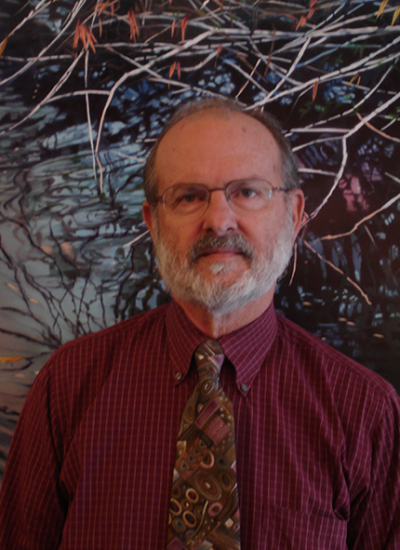Muhammed, M., Feldmesser, M., Shubitz, L. F., Lionakis, M. S., Sil, A., Wang, Y., Glavis-Bloom, J., Lewis, R. E., Galgiani, J. N., Casadevall, A., Kontoyiannis, D. P., & Mylonakis, E. (2012). Mouse models for the study of fungal pneumonia: a collection of detailed experimental protocols for the study of Coccidioides, Cryptococcus, Fusarium, Histoplasma and combined infection due to Aspergillus-Rhizopus. Virulence, 3(3), 329-38.
Mouse models have facilitated the study of fungal pneumonia. In this report, we present the working protocols of groups that are working on the following pathogens: Aspergillus, Coccidioides, Cryptococcus, Fusarium, Histoplasma and Rhizopus. We describe the experimental procedures and the detailed methods that have been followed in the experienced laboratories to study pulmonary fungal infection; we also discuss the anticipated results and technical notes, and provide the practical advices that will help the users of these models.
Galgiani, J. N., Ampel, N. M., Blair, J. E., Catanzaro, A., Geertsma, F., Hoover, S. E., Johnson, R. H., Kusne, S., Lisse, J., MacDonald, J. D., Meyerson, S. L., Raksin, P. B., Siever, J., Stevens, D. A., Sunenshine, R., & Theodore, N. (2016). 2016 Infectious Diseases Society of America (IDSA) Clinical Practice Guideline for the Treatment of Coccidioidomycosis. Clinical infectious diseases : an official publication of the Infectious Diseases Society of America, 63(6), e112-46.
It is important to realize that guidelines cannot always account for individual variation among patients. They are not intended to supplant physician judgment with respect to particular patients or special clinical situations. Infectious Diseases Society of America considers adherence to these guidelines to be voluntary, with the ultimate determination regarding their application to be made by the physician in the light of each patient's individual circumstances.Coccidioidomycosis, also known as San Joaquin Valley fever, is a systemic infection endemic to parts of the southwestern United States and elsewhere in the Western Hemisphere. Residence in and recent travel to these areas are critical elements for the accurate recognition of patients who develop this infection. In this practice guideline, we have organized our recommendations to address actionable questions concerning the entire spectrum of clinical syndromes. These can range from initial pulmonary infection, which eventually resolves whether or not antifungal therapy is administered, to a variety of pulmonary and extrapulmonary complications. Additional recommendations address management of coccidioidomycosis occurring for special at-risk populations. Finally, preemptive management strategies are outlined in certain at-risk populations and after unintentional laboratory exposure.
Mandel, M. A., Galgiani, J. N., Kroken, S., & Orbach, M. J. (2006). Coccidioides posadasii contains single chitin synthase genes corresponding to classes I to VII. Fungal genetics and biology : FG & B, 43(11), 775-88.
Coccidioides posadasii is a dimorphic fungal pathogen of humans and other mammals. The switch between saprobic and parasitic growth involves synthesis of new cell walls of which chitin is a significant component. To determine whether particular subsets of chitin synthases (CHSes) are responsible for production of chitin at different stages of differentiation, we have isolated six CHS genes from this fungus. They correspond, together with another reported CHS gene, to single members of the seven defined classes of chitin synthases (classes I-VII). Using Real-Time RT-PCR we show their pattern of expression during morphogenesis. CpCHS2, CpCHS3, and CpCHS6 are preferentially expressed during the saprobic phase, while CpCHS1 and CpCHS4 are more highly expressed during the parasitic phase. CpCHS5 and CpCHS7 expression is similar in both saprobic and parasitic phases. Because C. posadasii contains single members of the seven classes of CHSes found in fungi, it is a good model to investigate the putatively different roles of these genes in fungal growth and differentiation.
Nix, D. E., Swezey, R. R., Hector, R., & Galgiani, J. N. (2009). Pharmacokinetics of nikkomycin Z after single rising oral doses. Antimicrobial agents and chemotherapy, 53(6), 2517-21.
Nikkomycin Z is an antifungal drug that inhibits chitin synthase. This agent is under development as an orphan product for treatment of coccidioidomycosis. Safety and pharmacokinetics of nikkomycin Z were evaluated in healthy male subjects following single, rising oral doses ranging from 250 mg to 2,000 mg. A total of 12 subjects were recruited and divided into two groups. Group 1 (n = 6) received two out of three doses of 250 mg, 1,000 mg, or 1,750 mg and a placebo randomly in place of one of the doses. Group 2 (n = 6) received two out of three doses of 500 mg, 1,500 mg, or 2,000 mg and a placebo in place of one of the doses. Subjects were confined to the study unit overnight prior to dosing, and 12 blood samples were collected over 24 h postdosing while subjects were confined. Subjects returned for additional blood samples and safety evaluations at 48 h and 72 h after each dose. There was a 2-week washout period between doses. Plasma drug concentrations were determined using a validated high-performance liquid chromatography method. Nikkomycin Z was absorbed after oral administration, reaching a maximum concentration in serum of 2.21 microg/ml at 2 h postdose and an area under the concentration-time curve from 0 h to infinity of 11.3 microg x h/ml for the 250-mg dose. Pharmacokinetics appeared linear over the range of 250 to 500 mg; however, relative bioavailability was about 62 to 70% for the 1,000-mg dose and 42 to 47% for doses between 1,500 and 2,000 mg. The mean terminal half-life ranged from 2.1 to 2.5 h and was independent of dose. No serious or dose-related adverse events were observed. This study provides a basis for pharmacokinetic simulations and continued studies of nikkomycin Z administered in multiple doses.
ESPINELINGROFF, A., KISH, C. W., KERKERING, T. M., FROMTLING, R. A., BARTIZAL, K., GALGIANI, J. N., VILLAREAL, K., PFALLER, M. A., GERARDEN, T., RINALDI, M. G., & FOTHERGILL, A. (1992). COLLABORATIVE COMPARISON OF BROTH MACRODILUTION AND MICRODILUTION ANTIFUNGAL SUSCEPTIBILITY TESTS. JOURNAL OF CLINICAL MICROBIOLOGY, 30(12), 3138-3145.


